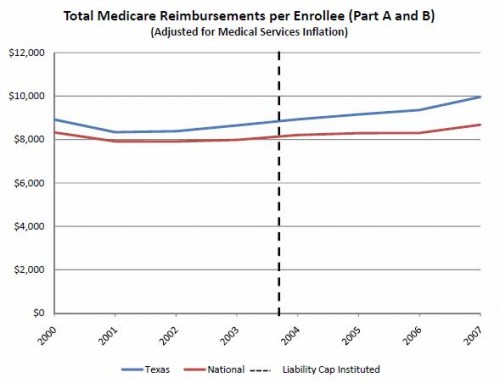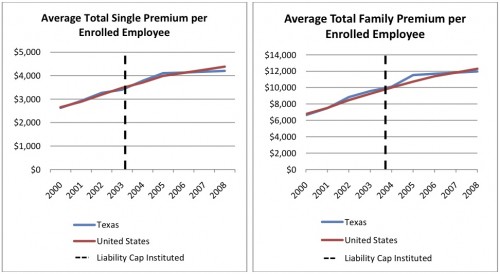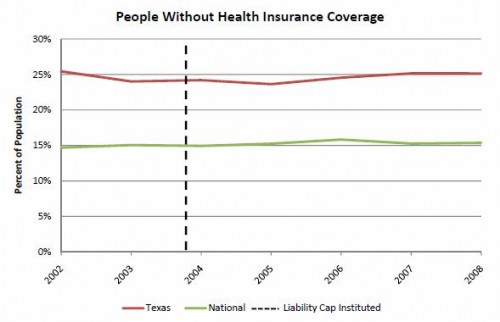Well, I seem to have touched a nerve. I’m getting a lot of email telling me I’m off the mark when it comes to tort reform. Some of this email is coming from physicians who claim to usually agree with me. You’re sure I’m wrong here. You’re sure that tort reform (by which you mean setting caps on damages) really would reduce health care costs and make physicians practice differently.
Unfortunately, most of you are coming at me with anecdotes. So I’m going to lay out for you why I think that tort reform as you prescribe isn’t a guaranteed success. I’m going to use data.
Let’s start with Texas. In 2003, Texas capped non-economic damages on malpractice lawsuits at $250,000. It’s pretty much what they Republicans wanted to do with health care reform as well (see their plan). In an op-ed in the Washington Post, Governor Perry and Speaker Gingrich said:
Texas, for example, has adopted approaches to controlling health-care costs while improving choice, advancing quality of care and expanding coverage. Consider the successful 2003 tort reform.
Well, that’s a fact we can check. Did tort reform have any of these effects? Here’s a handy chart from Public Citizen using data from the Dartmouth Atlas of Health Care (Selected Medicare Reimbursement Measures):
 That dotted line is when tort reform when into effect. Not only were costs for Medicare enrollees not controlled, they went up faster than the national average. In fact, Texas reimbursement rates in 2007 were the second highest in the country. What exactly did Governor Perry and Speaker Gingrich mean by “successful”?
That dotted line is when tort reform when into effect. Not only were costs for Medicare enrollees not controlled, they went up faster than the national average. In fact, Texas reimbursement rates in 2007 were the second highest in the country. What exactly did Governor Perry and Speaker Gingrich mean by “successful”?
Maybe they were talking about health insurance premiums? Were they controlled after reform? Again, a handy chart using data from the Agency for Healthcare Research and Quality, Medical Expenditure Panel Survey:
 Health insurance premiums again did not see a dramatic decrease after tort reform.
Health insurance premiums again did not see a dramatic decrease after tort reform.
Oddly enough, Governor Perry and Speaker Gingrich also claimed that Texas-style reforms “increased coverage”. To check that you need only go to the US census:
 Do you see the increase in coverage? I ask, because I can’t. This claim is actually laughable, because Texas as a state has the highest level of uninsurance in the US. Sometimes the Washington Post baffles me. Is there any fact-checking at all?
Do you see the increase in coverage? I ask, because I can’t. This claim is actually laughable, because Texas as a state has the highest level of uninsurance in the US. Sometimes the Washington Post baffles me. Is there any fact-checking at all?
Some people believe – just know – that reducing malpractice awards will lead to fewer lawsuits which will lead to a reduction in premiums which will lead to a reduction in defensive medicine which will lead to a reduction in health care costs. It’s a matter of faith. It has to be, because there’s just not that much evidence it will happen.

